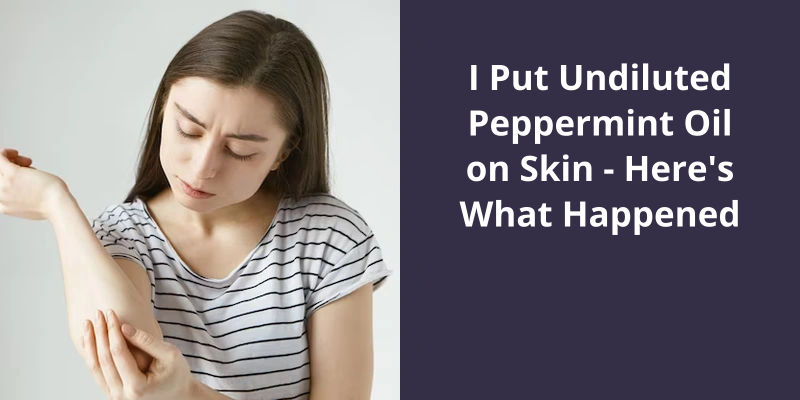Perfume is an integral part of any fashion statement, and it can be an expensive indulgence. Those who love to smell good have to be willing to pay top dollar to get the perfect scent. However, not everyone can afford to do so. It’s possible to find cheap alternatives that will still leave you smelling great. Discounts and deals on perfume products are great, but figuring out how to get the cheapest perfume without sacrificing quality can seem like a daunting task. Fortunately, there are several ways to get your hands on cheap perfumes. With a little research and some strategic shopping, you can score designer perfumes and fragrances at a fraction of the cost.

Is There a Difference Between Cheap and Expensive Perfume?
On the other hand, expensive perfumes typically have a more layered fragrance profile. They might have top, middle, and base notes that combine to create a more intricate scent. Top notes typically include lighter, citrusy scents, while base notes include more complex, musky aromas. Middle notes are what tie everything together.
This can include expensive flower extracts, rare spices, and even animal secretions. Natural ingredients tend to give off a more authentic, sophisticated aroma compared to synthetic fragrances. The time and effort that goes into sourcing and processing these ingredients is reflected in the cost of the perfume.
Another factor that sets expensive perfumes apart is their longevity. Higher-end fragrances tend to last longer on the skin than their cheaper counterparts. This is thanks to the use of higher-quality ingredients, which have more staying power. Additionally, expensive perfumes often come in more concentrated forms, like parfum, rather than eau de toilette. This means that you can use less of the perfume and still smell great all day long.
It’s worth noting, however, that some cheaper perfumes can also have staying power. Often, these cheaper fragrances will use synthetic ingredients to mimic the scent of more expensive perfumes. While the overall scent may not be as complex as a high-end brand, these cheap perfumes can still smell great and last all day.
Some people might be perfectly happy with the scent of a $10 perfume from the drugstore, while others are willing to spend hundreds of dollars on a designer fragrance. That being said, it’s important to keep in mind that a higher price tag doesn’t necessarily guarantee a better overall product.
The History of Perfume Making and How It Has Evolved Over Time
Perfume making has a rich history that dates back to ancient civilizations. The art of fragrance creation has evolved over time as new ingredients and techniques have been discovered. Today, the perfume industry is a multi-billion dollar global market, with countless brands and scents available.
When it comes to perfumes, there’s a lot to consider beyond just the scent. Quality is a major factor that can affect the final result, and it can be difficult to determine without the help of an expert. A perfumer’s assessment takes into account various aspects of a perfume to determine it’s quality, including the purity of the scent, the blend and complexity of the notes, and how the fragrance evolves over time. However, some fragrances stand out precisely because they don’t change over time. Let’s explore these concepts further.
How Can You Tell if a Perfume Is Good Quality?
As a perfumer, one of the most important assessments we make is determining the quality of a perfume. The first thing we look for is how pure the scent is. This means that the fragrance should smell as close to the natural ingredients as possible. If there’s a synthetic smell or harshness to the scent, this could indicate lower quality ingredients or improper blending.
Another important assessment is how well the notes blend together. A high-quality perfume should have a smooth and seamless transition from one note to the next. If there’s an abrupt or jarring shift, this could indicate poor blending or cheap ingredients. Additionally, the complexity of the notes is important. A good perfume should have layers of scent that reveal themselves over time. This complexity can indicate that high-quality, natural ingredients were used.
In terms of singular notes, a high-quality perfume should still have depth and complexity despite only having one dominant note. For example, if the perfume is primarily lavender, the scent should still have layers and nuances that make it interesting and unique. This indicates a perfumers skill in using high-quality ingredients and proper blending techniques.
An important factor to consider is how the accord evolves over time. This evolution should complement and enhance the scent, rather than making it disjointed or overpowering.
However, some fragrances are meant to be simple and straightforward, without a lot of change over time. This can be just as effective if done well. A high-quality perfume with a single note or accord should still have depth and complexity, without relying on a lot of change over time.
Assessing the quality of a perfume involves multiple factors, including how pure the scent is, how well the notes blend together, how complex the note is, how the accord evolves over time, and how well a singular note works. Whether complex or simple, a good perfume should be interesting, unique, and create an enjoyable sensory experience for the wearer.
It’s no secret that a good perfume can set the mood for any occasion. But what makes a high quality perfume stand out from the rest? While there are a number of factors that contribute to the overall quality of a fragrance, one key aspect is the purity of the essential oils used to create it. Without pure and toxin-free oils, a perfume can’t deliver on it’s promises and will fall short of consumer expectations. In this article, we’ll explore what it takes to create a truly exceptional fragrance and what sets it apart from the rest.
What Makes a High Quality Perfume?
Along with pure essential oils, high quality perfumes also rely on a careful selection of their ingredients. Fragrance houses must meticulously choose each ingredient for it’s unique scent profile and how it blends with other ingredients in the formula. The balance between top, middle and base notes is crucial in crafting a well-rounded fragrance that lasts throughout the day.
Another important factor in creating a high quality perfume is the extraction method used for the essential oils. Fragrance houses can use several methods such as steam distillation, cold-pressing, or solvent extraction. The chosen method can greatly affect the quality and purity of the final product. For example, steam distillation is a gentler process that preserves the delicate scent molecules in the essential oils, while solvent extraction can leave behind residues and contaminants.
Packaging also plays a role in the quality of a perfume. Fragrance houses must choose packaging materials that protect the essential oils from light, heat, and air. Dark glass bottles and airtight seals can help prevent oxidation and the breakdown of the fragrance over time.
They must also have an in-depth understanding of the chemistry of essential oils and how they interact with other ingredients.
Lastly, the price point of a perfume can also be an indication of it’s quality. In contrast, lower-priced perfumes may cut corners on quality, using synthetic ingredients or lower quality essential oils.
As a result, high quality perfumes deliver a premium scent experience that lasts throughout the day.
The Role of Natural Versus Synthetic Ingredients in Creating High Quality Perfumes.
- Natural ingredients are often favored in high quality perfumes due to their complexity and unique scent profiles.
- Synthetic ingredients can be useful in creating consistent scents and replicating rare natural ingredients.
- However, the best perfumes often use a combination of both natural and synthetic ingredients to achieve a balanced and captivating scent.
- Certain natural ingredients, such as oud and amber, are highly prized in the perfume industry for their rarity and complexity.
- While synthetic ingredients have been criticized for being less environmentally friendly than natural ingredients, advancements in technology have helped to create more sustainable synthetic options.
- Ultimately, the choice between natural and synthetic ingredients depends on the specific perfume and the desired scent profile.
Source: 9 Factors That Determine A Quality Fragrance Oil Purchaser
Conclusion
In conclusion, finding the cheapest perfume requires a little bit of strategy and effort. By utilizing the tips outlined above such as buying perfume dupes, checking deals pages regularly, using price checking websites, shopping in seasonal sales, buying the right type of perfume or aftershave, and getting free samples from fashion magazines or ordering online, you can ultimately save money without sacrificing quality. With a little patience and persistence, you can find the perfect fragrance at a fraction of the cost.





